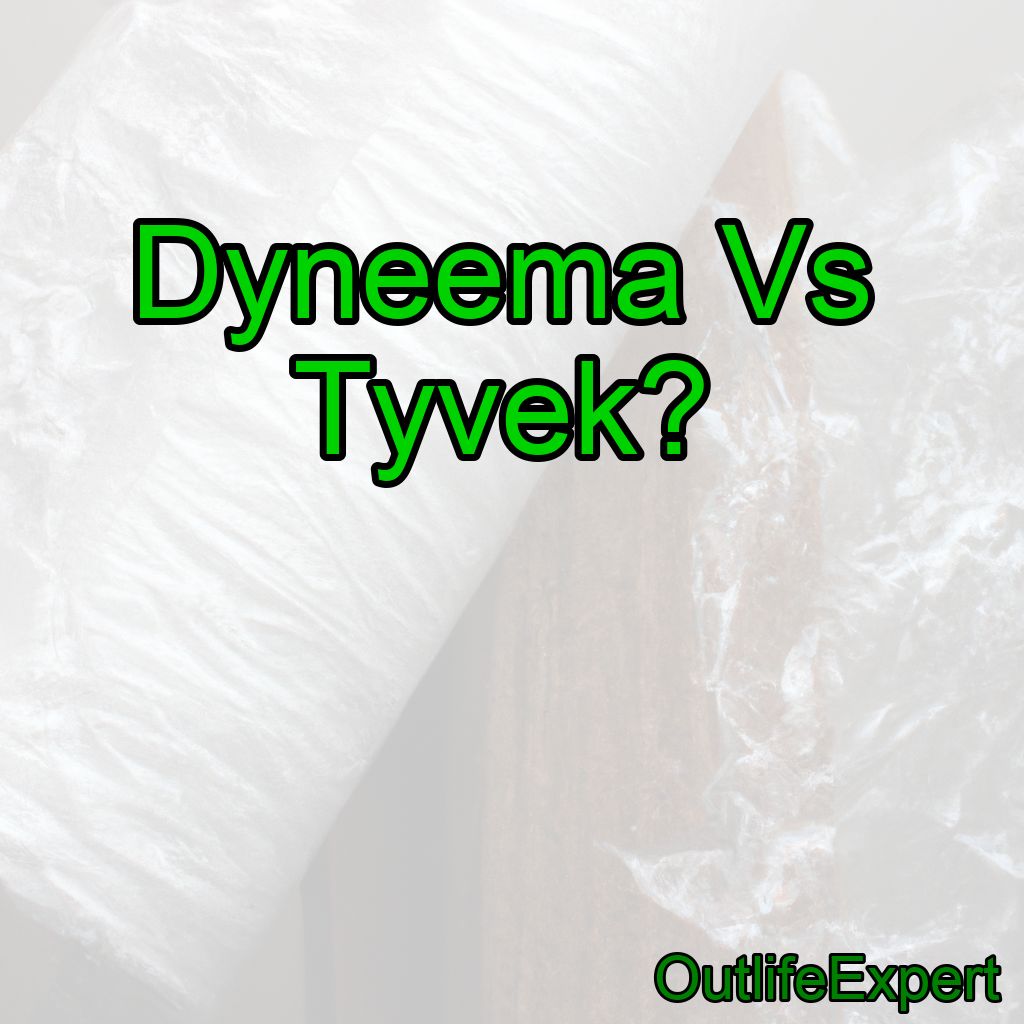Dyneema vs Tyvek: Which Material is Better for Outdoor Gear and Projects?
To answer this question, let’s first understand the key properties of each material, and then compare them in various applications like backpacks, tents, tarps, and other outdoor equipment.
What is Dyneema?
Dyneema, also known as Ultra-High-Molecular-Weight Polyethylene (UHMWPE), is a synthetic fiber that is incredibly strong, lightweight, and durable. It was originally developed in the 1970s as a high-performance material for industrial applications, but has since found its way into the outdoor industry due to its impressive characteristics.
Strength and Durability
One of the most notable features of Dyneema is its incredible strength-to-weight ratio. In fact, it’s often referred to as the world’s strongest fiber. Dyneema has a tensile strength 15 times greater than steel and is highly resistant to abrasion, making it the material of choice for high-performance applications where durability and weight are critical factors.
Weight and Packability
Dyneema’s lightweight nature is one of its most appealing qualities for outdoor enthusiasts. Dyneema fabrics, like Dyneema Composite Fabrics (formerly known as Cuben Fiber), can be incredibly thin and lightweight without sacrificing strength, making them perfect for ultralight backpacks, tarps, and tents.
What is Tyvek?
Tyvek is a brand name for a synthetic material made of high-density polyethylene fibers. It was developed in the 1960s by DuPont and is commonly used as a protective material for construction, mailing envelopes, and disposable clothing. Tyvek has gained popularity among outdoor enthusiasts due to its durability, water resistance, and breathability, while remaining lightweight and inexpensive.
Durability and Water Resistance
Tyvek is known for its durability and resistance to tearing, making it a popular choice for ground sheets, tarps, and tent footprints. Additionally, Tyvek is highly water-resistant, keeping your gear dry in wet conditions.
Breathability
One of the key advantages of Tyvek over other waterproof materials is its breathability. Tyvek allows water vapor to pass through, reducing the risk of condensation buildup and providing a more comfortable environment in tents and bivy sacks.
Comparing Dyneema and Tyvek in Outdoor Applications
Now that we have a basic understanding of each material’s properties, let’s compare them in different outdoor applications.
Backpacks
Dyneema:Ultralight backpacks made with Dyneema Composite Fabrics offer exceptional strength and durability while remaining extremely lightweight. These backpacks are often more expensive than their counterparts, but can be worth the investment for those looking to shed weight from their gear.
Tyvek:While not as common in backpack construction, Tyvek can be used to create lightweight and inexpensive backpacks. However, these packs may not be as strong or durable as their Dyneema counterparts.
Tents and Tarps
Dyneema:Dyneema tents and tarps provide an excellent balance of strength, durability, and weight. They’re often used by ultralight backpackers and through-hikers who require gear that can withstand the rigors of long-distance travel while minimizing packed weight.
Tyvek:Tyvek is a popular choice for DIY tent and tarp projects due to its affordability, durability, and water resistance. However, Tyvek tents and tarps may not be as lightweight or packable as Dyneema options.
Ground Sheets and Tent Footprints
Dyneema:While Dyneema can be used for ground sheets and tent footprints, its high cost may not be justifiable for this application, especially considering the availability of more affordable options like Tyvek.
Tyvek:Tyvek is a popular choice for ground sheets and tent footprints due to its durability, water resistance, and affordability. It provides excellent protection for your tent floor without adding significant weight to your pack.
Conclusion: Dyneema vs Tyvek – Which is Better?
Ultimately, the choice between Dyneema and Tyvek will depend on your specific needs and budget. Here are some key takeaways to consider when making your decision:
1.Dyneema is stronger and more durablethan Tyvek, making it ideal for high-performance applications.
2.Dyneema is lighter and more packablethan Tyvek, making it a preferred choice for ultralight backpackers.
3.Tyvek is more affordablethan Dyneema, making it an attractive option for DIY projects and budget-conscious adventurers.
4.Tyvek is more breathablethan many waterproof materials, offering a comfortable environment in tents and bivy sacks.
5.Dyneema backpacksoffer exceptional strength and durability, but come with a higher price tag.
6.Tyvek backpackscan be lightweight and inexpensive, but may not be as strong or durable as Dyneema options.
7.Dyneema tents and tarpsprovide an excellent balance of strength, durability, and weight for long-distance travelers.
8.Tyvek tents and tarpsare a popular choice for DIY projects due to their affordability and water resistance, but may not be as lightweight as Dyneema options.
9.Tyvek is an excellent choice for ground sheets and tent footprintsdue to its durability, water resistance, and affordability.
In summary, if you prioritize strength, durability, and weight savings, and are willing to invest in your gear, Dyneema is the clear choice. However, if you’re looking for more affordable, breathable, and still durable options, Tyvek is a great alternative.




